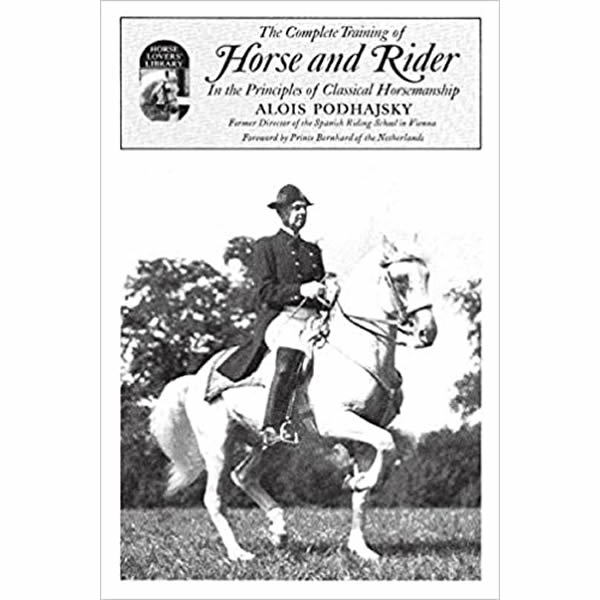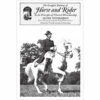The Complete Training of Horse and Rider by Alois Podhajsky
$18.00
Out of stock
Product Description
For over a quarter of a century, Colonel Alois Podhajsky was the director of the Spanish Riding School in Vienna, home of the famous white Lipizzaner stallions whose remarkable performances have thrilled audiences throughout the world. Now, for the first time, Col. Podhajsky has set forth explicitly and in practical, instructive fashion the step-by-step methods of training both horse and rider that are used at the School and that are applicable foundations of all good horsemanship, for their purpose is to develop the natural abilities of the horse and to make riding a graceful, pleasurable experience.
From the very beginning – from the moment that the young horse is led from the stable – the book follows the stages of training on the longe and mounted. The walk, trot, canter, the halt and half-halt, lateral work, and at the more advanced levels, the piaffe, passage, pirouette, and other figures are clearly, precisely described and the methods for obtaining best results given in simple, exact terms. Contact with the bit, collection, bending, position of the head, straightening, prevention of bad habits – all are discussed with relation to the development and improvement of every phase of accomplishment.
Similarly, the training of the rider is meticulously programmed, with full attention to the use of the aids at every stage and in all the exercises. Equipment, too, is analyzed in detail. And finally, there is a unique revelation of just how the spectacular “airs above the ground” are achieved and correctly performed.
The result is a definitive book on classical horsemanship from first introduction to the ultimate in haute ecole – a record and a manual of the fundamental principles, the techniques, and the practice of the art of riding.
This is a book that belongs in every horseman’s library!
(softcover, photos, illustrations, 283 pgs.)
Excerpt from the book:
No book of instruction can explain riding by generalities alone. If it is to be of value, a method must be laid down. Every detail must be explained, even at the risk of being long-winded, if the method is to be described with absolute clarity.
Ideas with regard to the importance of theory over practice will always differ, but they will agree on one point, namely, that the one is not complete without the other. Theory without practice is of little value, whereas practice is the proof of theory. It is the theoretical knowledge that will show the way to perfection. Theory is the knowledge, practice the ability. Knowledge must always take precedence over action. This thesis is especially true of the art of riding. In spite of initial success, the self-taught person can never become more than a workman; only on a foundation of theory can riding develop to the realm of art.
Equestrian art, perhaps more than any other, is closely related to the wisdom of life. Many of the same principles may be applied as a line of conduct to follow. The horse teaches us self-control, constancy, and the ability to understand what goes on in the mind and the feelings of another creature, qualities that are important throughout our lives. Moreover, from this relationship with his horse the rider will learn that only kindness and mutual understanding will bring about achievements of highest perfection. Many roads lead to Rome. The question is which is the best and shortest. With riding, only theoretical knowledge and practical ability will help the student to select the best road to success. Once selected, it must be followed to the end; changes of direction will lead to confusion and failure to reach the goal.
To be successful, the rider must be able to distinguish between cause and effect. The effect will be easy to see, but the cause will be recognized only through knowledge, which is supplied by theory.
Be the first to review “The Complete Training of Horse and Rider by Alois Podhajsky” Cancel reply
You must be logged in to post a review.
Related products
Philosophical
Philosophical
A Good Horse Is Never a Bad Color: Tales of Training through Communication and Trust By Mark Rashid
Limited Time Only
Horse Tales: True Stories from an Idaho Ranch by Heather Thomas
Philosophical
Broken or Beautiful: The Struggle of Modern Dressage by Dominique Barbier & Liz Conrod
















Reviews
There are no reviews yet.